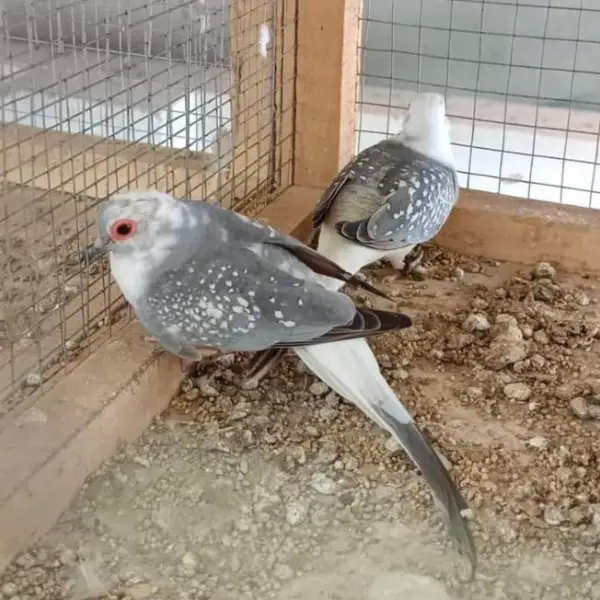Free shipping order over 20,000
Blue Pale Fellow
₨ 30,000 Original price was: ₨ 30,000.₨ 20,000Current price is: ₨ 20,000.
- Scientific Name: Agapornis spp. (the specific species can vary, such as Fischer’s Lovebird or Peach-faced Lovebird)
- Size: Typically around 13-17 cm (5-7 inches) in length, depending on the species.
- Color: The Blue Pale Fellow is characterized by its very light and soft blue coloration. The “pale” aspect indicates a diluted blue hue, which can range from a pastel blue to a nearly white shade with a faint blue tint. The coloration is typically more subdued compared to the standard Blue Lovebird, giving the bird a gentle and delicate appearance.
- Beak: The beak is generally light-colored, often orange or pinkish.
- Eyes: The eyes are usually dark and stand out against the pale blue feathers.
- Legs and Feet: Legs and feet are usually pale or flesh-colored.
Share
Share on facebook
Share on email
Important Keys:
Habitat
- Distribution: Lovebirds are native to Africa, but the Blue Pale Fellow is typically bred in captivity. It does not have a specific natural habitat.
- Environment: In captivity, Blue Pale Fellows thrive in aviaries or spacious cages where they have ample room to fly, perch, and interact. They adapt well to indoor environments if given adequate space and social interaction.
Diet
- Primary Food: Their diet mainly consists of seeds, including millet, canary seed, and other small seeds. A balanced mix of pellets is also beneficial.
- Supplementary Food: Fresh fruits, vegetables, and occasional protein sources like egg food or mealworms are important for a balanced diet.
- Feeding Behavior: They forage for food both on the ground and in their environment. In captivity, they are provided with a mix of seeds and other food items in feeding dishes.
Breeding
- Breeding Season: In captivity, Blue Pale Fellows can breed year-round if conditions are suitable.
- Nest Location: They build nests in enclosed spaces, such as nest boxes or dense vegetation. In captivity, they use wooden or artificial nest boxes.
- Egg Quantity: Clutches generally consist of 4-6 eggs.
- Incubation Period: The eggs are incubated for about 21-23 days, with both parents participating.
- Fledging: Chicks typically fledge around 6-8 weeks after hatching.
Lifespan
- In the Wild: Lovebirds generally live around 10-15 years.
- In Captivity: With proper care, they can live up to 15-20 years or more.
Behavior
- Social Structure: Lovebirds are highly social and thrive in pairs or small groups. They are known for their affectionate and playful nature.
- Vocalization: They produce a variety of sounds, including chirps, whistles, and soft calls, which are used for communication and during social interactions.
![]()
Be the first to review “Blue Pale Fellow” Cancel reply
Related Products
-
-70%
Zebra Finch
₨ 5,000Original price was: ₨ 5,000.₨ 1,500Current price is: ₨ 1,500. -
-22%
Strawberry Finch
₨ 4,500Original price was: ₨ 4,500.₨ 3,500Current price is: ₨ 3,500. -
-20%
Owl Finch
₨ 20,000Original price was: ₨ 20,000.₨ 16,000Current price is: ₨ 16,000. -
-20%
-
-20%
White-tailed Dove
₨ 1,250Original price was: ₨ 1,250.₨ 1,000Current price is: ₨ 1,000. -
-42%
Silver Pied Dove
₨ 12,000Original price was: ₨ 12,000.₨ 7,000Current price is: ₨ 7,000. -
-20%
Diamond Pied Dove
₨ 6,250Original price was: ₨ 6,250.₨ 5,000Current price is: ₨ 5,000. -
-20%
Crested Dove
₨ 43,750Original price was: ₨ 43,750.₨ 35,000Current price is: ₨ 35,000.
Sign Up for Exclusive Birds Care Tips and Offers from Phool Panchi
Company links
Category
Contact
© 2024 Phool Panchi | Developed By v3Studio













Reviews
There are no reviews yet.